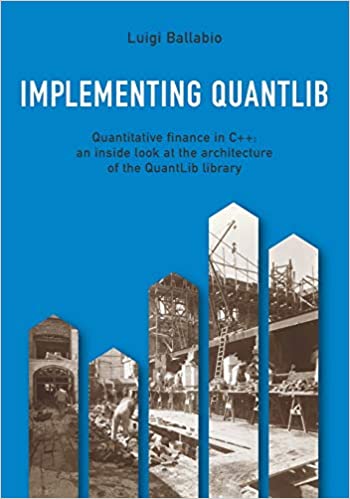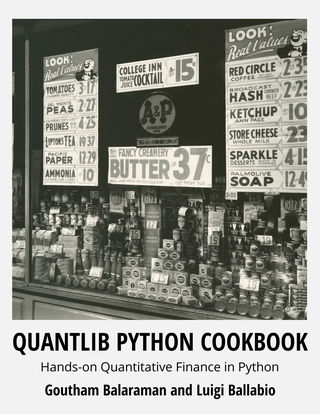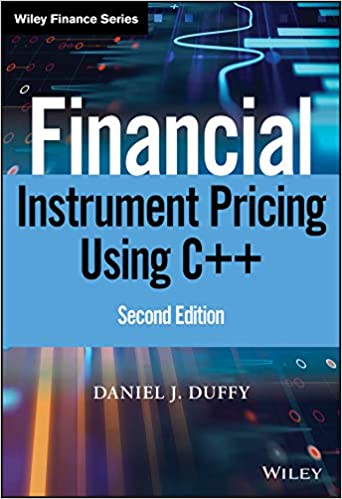QuantLib is an open-source software library which provides tools for software developers and practitioners interested in financial instrument valuation and related subjects. QuantLib is written in C++.
History
The QuantLib project was started by a few quantitative analysts who worked at RiskMap (currently StatPro Italia). The first e-mail announcing QuantLib to the world was sent on December 11, 2000, and signed by Ferdinando Ametrano, Luigi Ballabio and Marco Marchioro. RiskMap was founded by Dario Cintioli, Ferdinando Ametrano, Luigi Ballabio, Adolfo Benin, and Marco Marchioro. The people at RiskMap faced the problem, not for the first time in their lives, to build a financial library from scratch. It was Ferdinando's idea to build an open source library that could be used by quants all over the world when starting to build a new quantitative library. Currently, the QuantLib project is headed by Luigi Ballabio and Ferdinando Ametrano.
Release History
Usage
QuantLib is available as C++ source code which is compiled into a library. It is known to work on Windows, Mac OS X, Linux and other Unix-like operation systems.
It can be linked with other languages via SWIG. The Python binding[2] can be installed via pip; the "RQuantLib" package makes parts of QuantLib accessible from R.
Much of QuantLib's functionality can be used in Excel via the add-in QuantlibXL.
Licensing
QuantLib is released under a modified BSD license known as the XFree86-type license. It is GPL compatible.
Features
The software provides various facilities for computing values of financial instruments and related calculations. It is a major example of Mathematical finance. Its main use is in quantitative analysis.
The financial instruments and derivatives it can evaluate include
- Options
- Asian options
- Basket options
- Cliquet options
- Compound options
- Digital options
- Lookback options
- Vanilla options
- Bonds
- Amortizing bonds
- Convertible bonds
- Fixed rate bonds
- Floating rate bonds
- Zero-coupon bonds
- Yield curve
- Date calculations
- Calendars
- Date calculations
- Day counting methods
- Swaps
- Asset swaps
- BMA swaps
- Year-on-year inflation swaps
- Vanilla swaps
- Quantos
- Currencies
It has models for
It can compute derivative prices using methods including:
See also
References
- ^ "Release 1.34". 24 April 2024. Retrieved 25 April 2024.
- ^ "QuantLib: Python bindings for the QuantLib library".
External links

Implementing QuantLib:
Quantitative finance in C++: An inside look at the architecture of the QuantLib library
- Luigi Ballabio
This book is a report on the design and implementation of the QuantLib Library for C++

QuantLib Python Cookbook:
Quantitative finance in Python.
Goutham Balaraman and - Luigi Ballabio
A hands-on, interactive look at the QuantLib library through the use of Jupyter notebooks as working examples.

Practical Quantitative Finance with ASP.NET Core and Angular:
Building Ultra-Modern, Responsive Single-Page Web Applications for Quantitative Finance using ASP.NET Core and Angular.
Jack Xu -
Building Ultra-Modern, Responsive Single-Page Web Applications for Quantitative Finance using ASP.NET Core and Angular.

Financial Instrument Pricing Using C++ 2nd Ed.:
- Daniel Duffy
This complete guide to C++ and computational finance is a major extension to Daniel J. Duffy's 2004 edition.

